The Governance of the TRON Ecosystem - Crypto Academy / S4W7 - Homework Post for @yohan2on
Hey Guys..!!
Meet again with me Wahyu Nahrul on the other Steemit Crypto Academy homework. Today I will be working on homework given by one of our professors @yohan2on.
The homework given by our professor this week is about The Governance of the TRON Ecosystem.
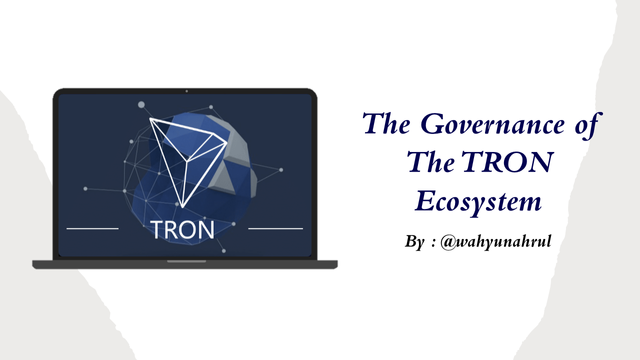
Okay, just get to the discussion. Happy Reading !!

Super Representatives, SR Partners and SR Candidates
The Tron Blockchain is a Blockchain created using a DPoS (Delegated Proof of Stake) based consensus mechanism. Maybe all of us Steemians are familiar with the word DPoS because the Steemit Blockchain itself also uses the same type of mechanism as the Tron Blockchain.
Simply put, this type of consensus mechanism is a type of consensus where there will be people who are appointed as blockchain validators so that they will create new blocks in the blockchain system. In the Tron Blockchain ecosystem, there are 27 people who will be appointed as validators for these blocks.
The Tron Blockchain is a Blockchain created using a DPoS (Delegated Proof-of-Stake) based consensus mechanism. Maybe all of us Steemians are familiar with the word DPoS because the Steemit Blockchain itself also uses the same type of mechanism as the Tron Blockchain.
Simply, this type of consensus mechanism is a type of consensus where there will be people who are appointed as blockchain validators so that they will create new blocks in the blockchain system. In the Tron Blockchain ecosystem, there are 27 people who will be appointed as validators of these blocks, which are referred to as "Super Representatives".
Then in addition to the 27 people who were appointed as Super Representatives, there are several other people who also participated in participating as Super Representatives but they were not elected, these people are referred to as "Super Representatives Partners (SR Partners)" and " Super Representative Candidates (SR Candidates)". Now I will explain them to you one by one.
1. Super Representatives
Super Representatives (SR) are people who are elected by the system through voting who are tasked with creating blocks and validating transactions on the Tron Blockchain, this is the same as "Miners" which we often hear in the mechanism another consensus because essentially they both create and validate new blocks on a Blockchain. In the Tron Blockchain itself, there are 27 people who are elected as SRs every 6 hours and will be ranked from 1 to 27 by seeing how many they get votes as Super Representatives.
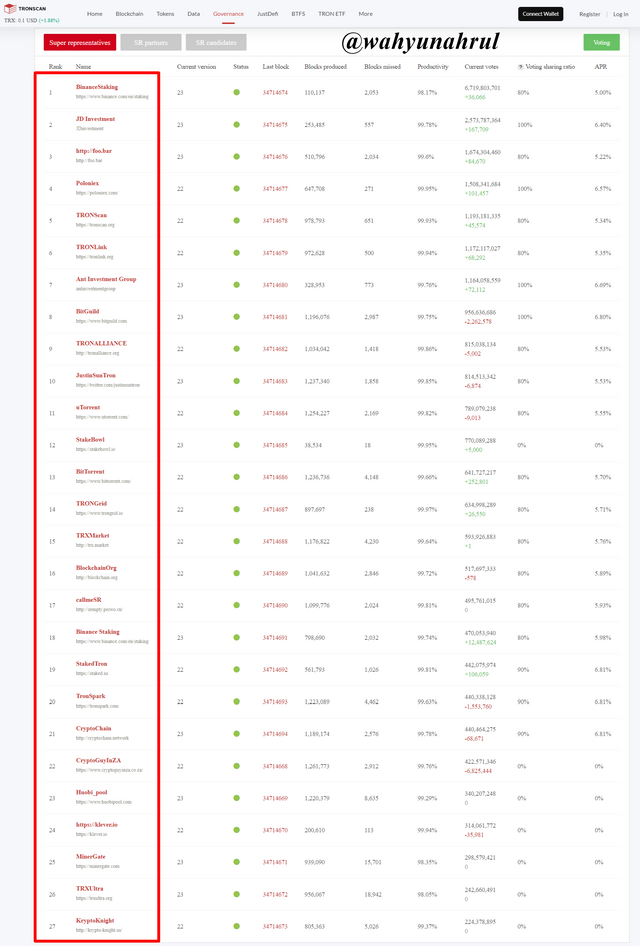
Each Super Representative will be given 3 seconds in each round to create or validate a new block, after these 3 seconds have passed, the turn to create a new block will be given to other Super Representatives according to their respective serial numbers.
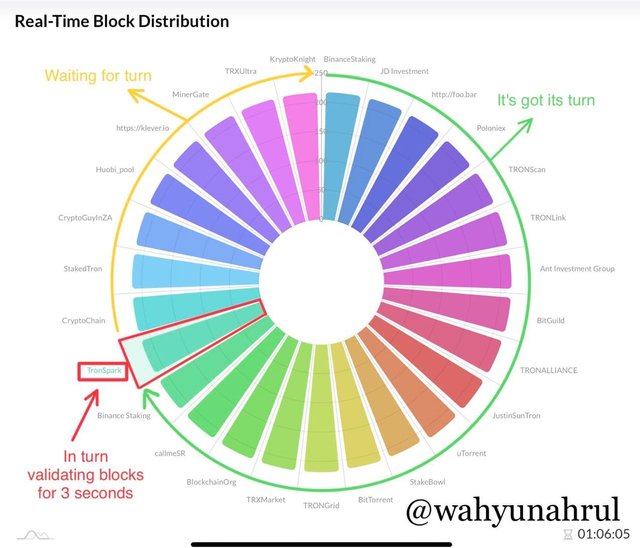
From the activities carried out by the Super Representatives, they will be rewarded with 32 Tronix (TRX) for each block validation they perform, then the TRX reward will be sent to their account within 24 hours after the one round block validation process ends.

2. Super Representatives Partners (SR Partners)
Every round in the Super Representatives election, there are many accounts that register themselves so that they can be elected as one of the 27 Super Representatives who can validate blocks in the TRON ecosystem. But not all accounts can be elected because there are only the top 27 accounts with the most votes that can be elected as Super Representatives, and the rest of the accounts that are not selected are called "Super Representatives Partners (SR Partners)".

Super Representatives Partners (SR Partners) will be automatically selected by the system who are ranked 28 to 127 at the time of the previous Super Representatives election. Unlike Super Representatives, Super Representatives Partners (SR Partners) have no obligation to participate in creating and validating new blocks in the Tron ecosystem so they will not get rewarded rewards from the block validation process, but they will still get rewarded from each vote that is adjusted to the voting portion obtained by each account.
Then Super Representatives Partners (SR Partners) also have the right to submit proposals related to modifying existing parameters in the Tron Blockchain ecosystem.

3. Super Representative Candidates (SR Candidates)
At the next level there are what are called "Super Representative Candidates (SR Candidates)". SR Candidates are accounts that did not make it into the top 127 in the Super Representatives election process in the previous period. All accounts registered as SR Candidates will be automatically entered into one of the accounts that register as Super Representatives in the next round.

Then, unlike SR Partners, SR Candidates will not get any reward either in the block validation process or the period is given for the votes they get.

Difference Between PoS and DPoS Consensus Mechanism
As we know that the consensus mechanism is a series of activities carried out by a group of nodes to reach an agreement in order to approve a new information/data that is entered into the Blockchain network. And until now there have been many types of consensus types used in various blockchains and among all these types of consensus there are 2 types of consensus mechanisms that look similar but not the same, namely Proof of Stake (PoS) and Delegated Proof of Stake (DPoS).
1. Proof of Stake (PoS)
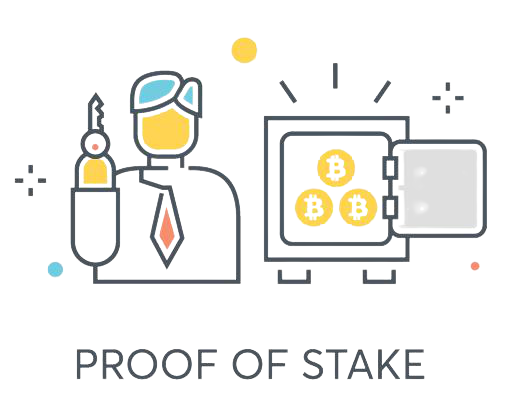
Proof of Stake (PoS) is a consensus mechanism that uses a system where all data that will be added to the Blockchain network will be validated by validators who hold certain tokens, the selected validators are the people who have the most tokens among other validator candidates so that they will have the right to mine and validate the data to be added.
This consensus mechanism has the advantage that each data validation process or transaction that occurs does not require large computing power, so it will save electricity in the long term. Therefore, many blockchains are now starting to switch to a Proof of Stake (PoS) consensus mechanism because it is considered more efficient and environmentally friendly, the biggest example is the migration of Blockchain Ethereum from a Proof of Work (PoW) mechanism to a Proof of Stake (PoS) mechanism on Ethereum 2.0 in this year.

2. Delegated Proof of Stake (DPoS)
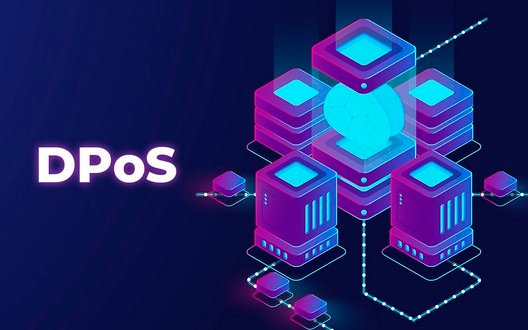
Delegated Proof of Stake (DPoS) is a type of consensus mechanism that is almost the same as Proof of Stake (PoS) where all data that will be added to the Blockchain network will be validated by the selected validator. However, it is different from Proof of Stake (PoS) which chooses validators based on the number of tokens they have. In the Delegated Proof of Stake (DPoS) mechanism system, validators will be elected democratically through a voting system where the people who have the most votes will automatically become the validator, and this validator is called "Witness".
The DPoS mechanism was first introduced by Daniel Larimer who is the one who created the Steemit platform, the EOS Blockchain, and BitShares. He made this system because according to him a system like this would be much fairer than the Proof of Stake (PoS) mechanism, in which only people who have large capital can act as validators.
With the voting system, it is hoped that the elected Witnesses who act as validators will be more trusted and will not commit fraud because they are chosen and monitored directly by many people. If a witness is caught cheating in carrying out his duties, then he will be threatened with losing his position and the number of token assets he has locked as a condition for him to become a witness will be forfeited and cannot be retrieved.

From the explanation of the two types of consensus mechanisms, we can see that there are some differences between Proof of Stake (PoS) and Delegated Proof of Stake (DPoS). I personally think that the existing system on DPoS is much better and more efficient than PoS, the democratic system used by DPoS will make the blockchain network system much healthier and its users can feel directly involved in the blockchain network system they use. Then in DPoS, we can also monitor the performance of the selected witnesses so that nothing can be covered up and everyone can act as a supervisor of the blockchain system.

Stake/Freeze TRX and Vote For SRs
Now I will show you how to stake/freeze TRX on Tron Wallet to get voting rights which we will also use to elect Super Representatives in the Tron ecosystem.
Actually, there are two ways that we say we use to do this, namely the first way by connecting our Tron Wallet with the official website of Tronscan. Then the second way is to use an application called "TronLink Pro" which we can download via the Play Store or App Store on our smartphones. In this example, I will practice the second way, namely through the TroLink Pro application, because I think it will be more practical and faster than having to open the website again.
The first thing I will show you is how to stake/freeze the TRX that we have.
1. Stake/Freeze TRX
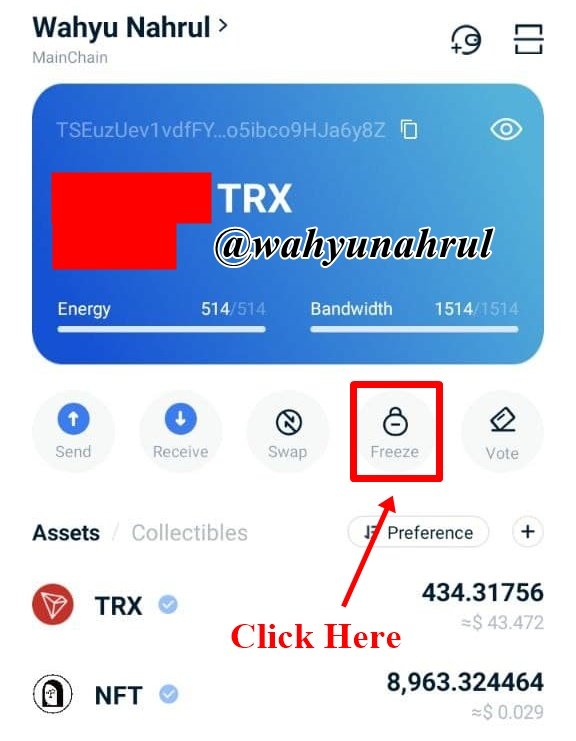
Step 1
On the start page of our Tron Wallet in the TronLink Pro application, there will be an option that says "Freeze" which is symbolized by a padlock. So we choose that option.

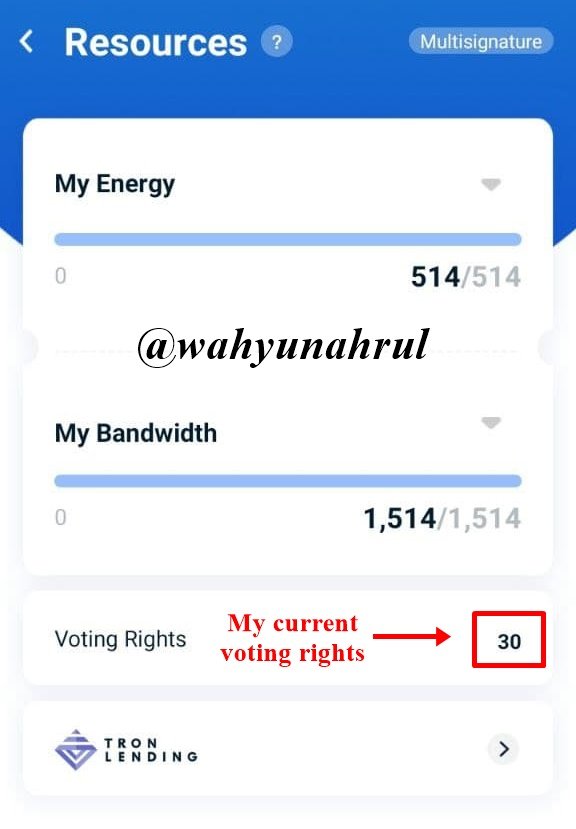
Step 2
After that we will be taken to another page that looks like the picture below, here we can see how much energy, bandwidth, and voting rights we currently have. In the side example, we can see that I have 30 voting rights and I will try to add those votes.

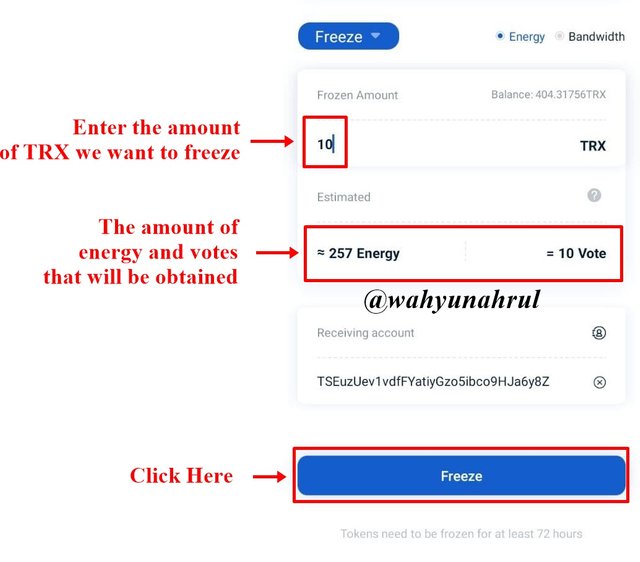
Step 3
Scroll the page until you find the "Freeze" menu. Fill in the amount of TRX you want to freeze in the first column, then in the second column, you will be shown how much Bandwidth or energy and voting rights you will get according to the amount of TRX you freeze. Then click on the "Freeze" button at the bottom of the page. After that, click on the "Swap" button at the bottom.

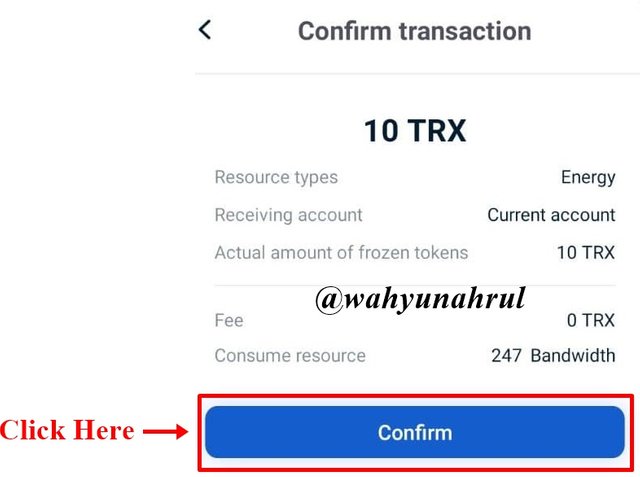
Step 4
After that we will be asked to confirm the freezing of TRX which we will do, to continue we just click on the "Confirm" button.

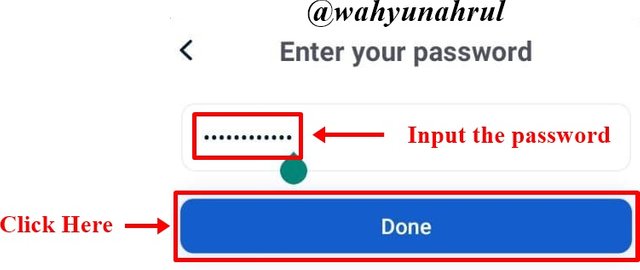
Step 5
Then enter the transaction password from your account so that the TRX freezing process can continue.

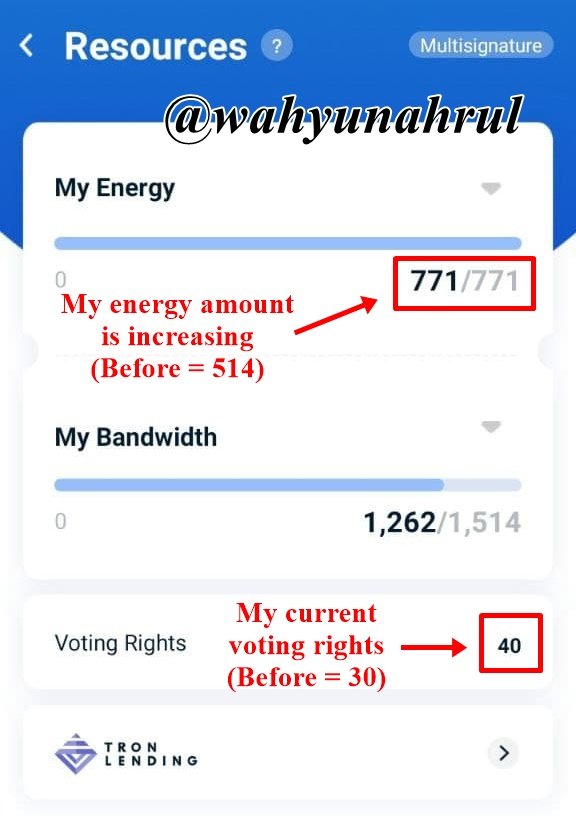
Step 6
And done!!
Your TRX has been successfully frozen. Then you receive Energy or Bandwidth along with voting rights that can be used to elect Super Representatives later.In the example above, we can see where the amount of my Energy which was originally 514 has increased to 771. Then the number of voting rights which was originally only 30 has become 40. This proves that the 10 TRX freezing process that I did have been successfully executed.

2. Vote For Super Representatives

Step 1
In addition to the Freeze option that we explained earlier, there is another option called "Vote", in order to be able to vote to elect Super Representatives, we will choose that option.

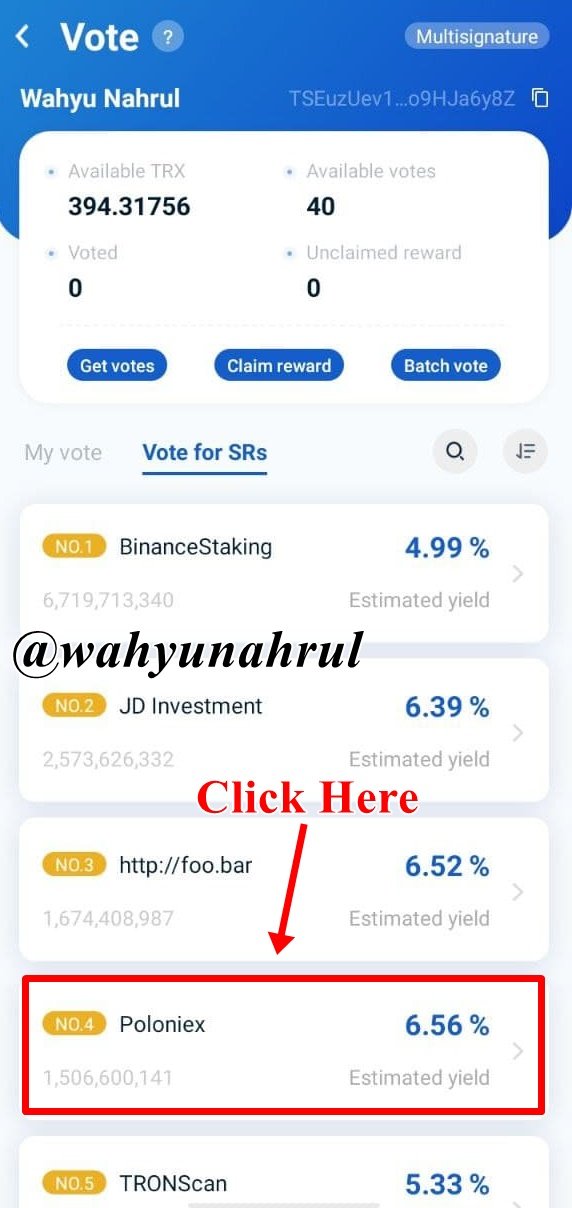
Step 2
After that, we will be taken to another page that will initially look like the image below. Here we will be shown a list of all available Super Representatives, here I will choose the top 5 rankings and those that offer the largest estimated yield value at this time. And the best choice according to that category goes to Poloniex which is in the top 4 and offers an estimated yield of 6.56%.

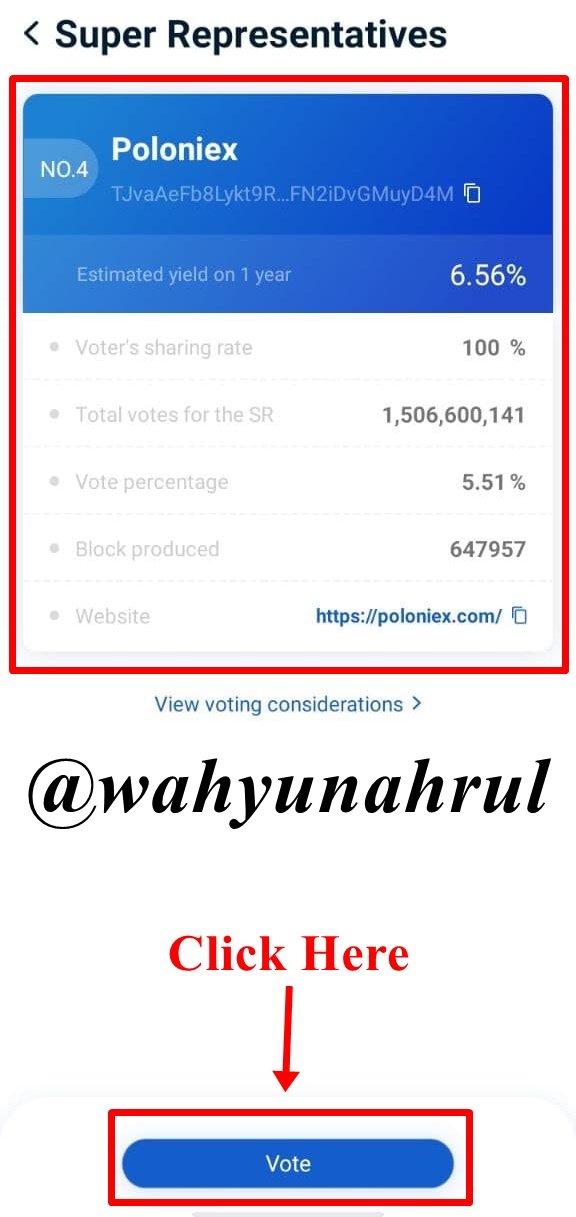
Step 3
Next, we will be taken to the detail page of the Super Representatives that we will choose, there will be shown important data that will be our consideration for choosing the account as our chosen Super Representative. If we are sure we will choose the account, then we just click "Vote" at the bottom of the page.
After that, click on the "Swap" button at the bottom.

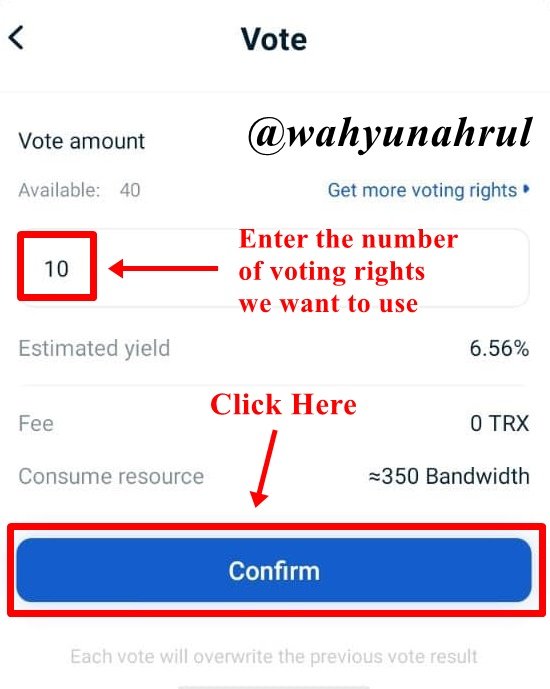
Step 4
After that, we will be asked to enter the number of voting rights that we want to use to elect the Super Representatives, here I will give an example of using 10 My Voting Rights for a Poloniex account. After filling in these fields, all we have to do is click on the "Confirm" button to continue.

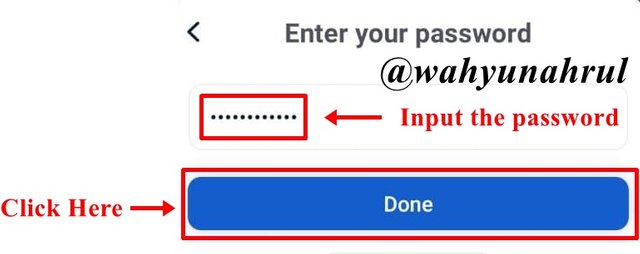
Step 5
Then we will be asked to enter the transaction password from your account so that the Super Representatives selection process can be continued.

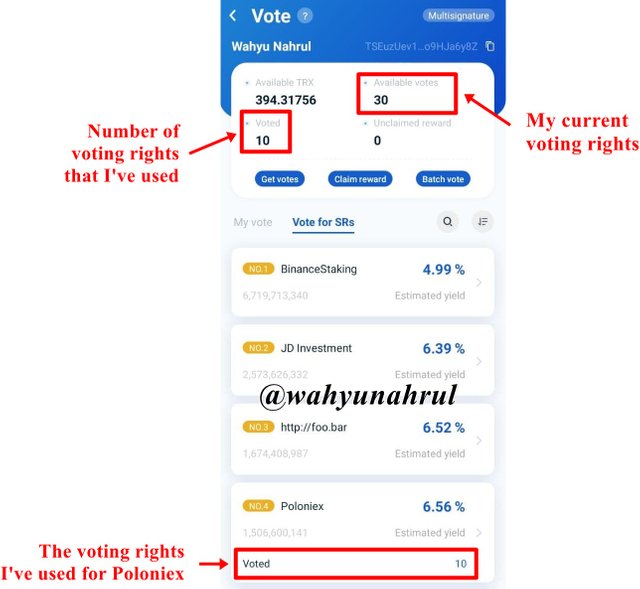
Step 6
And done!!
We have successfully used our voting rights to elect one of the 27 Super Representatives in the Tron ecosystem. For more details, we can see the details of the voting rights that we have used on the start page of the Vote menu earlier.In the example above, we can see where the number of my voting rights, which was originally 40, has been reduced to 30. Then on the Super Representatives option menu from Poloniex, there are the words "Voted 10" which means the 10 voting rights have been used to elect Poloniex as one of the Super Representatives candidates who will participate in creating and validating new blocks on Tron Blockchain.

Last Word (Conclusion)
The Tron Ecosystem is a blockchain ecosystem that many people have been asking for lately. We can see how enthusiastic people are in using various DApps on the Tron Blockchain and various other things. And all of this is inseparable because of the influence of the consensus mechanism they use (DPoS) which is able to make everything run smoothly.
And from the Super Representatives selection process described earlier, we can see that the Tron ecosystem is truly a democracy where each of us can choose Super Representatives who we think are worthy of carrying out their duties as validators on the Tron Blockchain.
Those are some of my explanations regarding The Governance of the TRON Ecosystem, I apologize if there are still many mistakes that you can get when reading my explanation earlier, I would be very grateful if you told me in the comments column below.
Thank you for reading my blog, hope it will be useful for all of you. 😁



Congratulations! Your post has been selected as a daily Steemit truffle! It is listed on rank 21 of all contributions awarded today. You can find the TOP DAILY TRUFFLE PICKS HERE.
I upvoted your contribution because to my mind your post is at least 6 SBD worth and should receive 24 votes. It's now up to the lovely Steemit community to make this come true.
I am
TrufflePig, an Artificial Intelligence Bot that helps minnows and content curators using Machine Learning. If you are curious how I select content, you can find an explanation here!Have a nice day and sincerely yours,

TrufflePigHi @wahyunahrul
Thanks for participating in the Steemit Crypto Academy
Feedback
Total| 10/10
This is excellent work. Thanks for taking the time to learn about the governance of the Tron ecosystem.
Thank you so much professor.
#club5050 😀
Buenas profesor mi tarea la hice hace más de 3 dias, aquí le dejo el link.
👇👇👇👇👇👇👇
https://steemit.com/hive-108451/@andersonhm/meme-tokens-crypto-academy-s4w7-publicacion-de-tarea-para-wahyunahrul